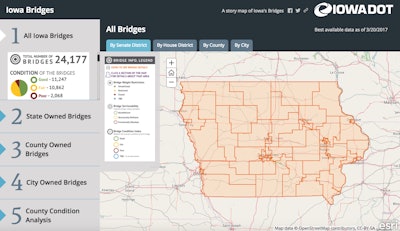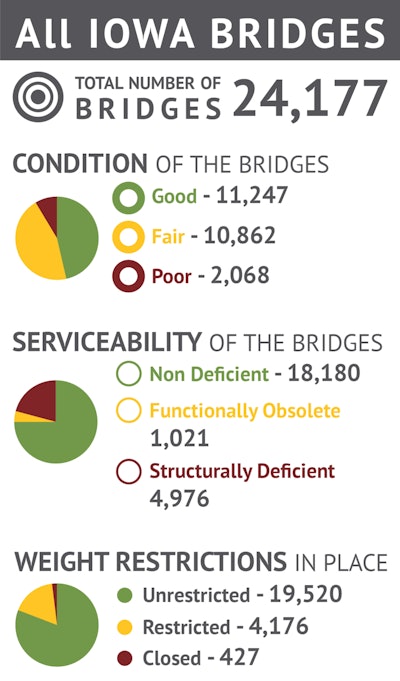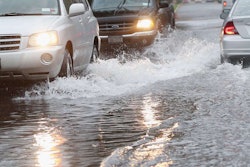
The Iowa Department of Transportation has created an interactive website that provides detailed bridge conditions across the state in a map format covering structures owned by cities, counties and the state.

“Our inspectors inspect bridges year-round, so the data is being updated constantly,” says Scott Neubauer, Iowa DOT state bridge maintenance and inspection engineer. “In the past we used an annual ‘snapshot’ of bridge conditions, but using an algorithm with the mapping technology, we can show in nearly real time the condition of each structure. We feel the algorithm we use is a better indicator of actual bridge conditions than others that might be out there.”
Neubauer says the department developed its own rating system in order to identify and set priorities for bridges that needed to be included in Iowa DOT’s five-year transportation improvement program.
He created an algorithm that factors in structure condition, capacity, clearance, details on waterways a bridge spans and highway a bridge carries. The algorithm calculates a bridge condition index that provides a status from 0 to 100 used to rate a bridge as good, fair or poor. This data is fed into the map.
“Creating this map helps us visually tell the ongoing story of our structures,” he explains. “When we calculated the bridge condition index for every bridge in the state, we found the natural delineation of a ‘Good’ rating would fall at 70 and up. To gain a ‘Fair’ rating, the bridge would score between 37.5 and 70, and anything at 37.5 and below would be rated as ‘Poor’.”
Definitions of Good, Fair, Poor bridges used by Iowa DOT
Good
All elements of the bridge are sound. No maintenance is needed.
Fair
All elements are sounds. Some preventive maintenance would prolong the life of the bridge.
Poor
One or more elements are deteriorating. Repairs or replacement will be needed in the near future.
Iowa DOT definitions of Structurally Deficient, Functionally Obsolete
Structurally Deficient
One or more structural elements are in need of repair or replacement. Bridge length may be inadequate for waterway size. Load carrying capacity may be insufficient for today’s legal truck sizes.
Functionally Obsolete
Width of bridge may be narrower than current standards. Vertical clearance under the bridge may not meet current standards. Bridge length may be barely adequate for waterway size. Load carrying capacity may be barely tolerable for today’s legal truck sizes.












